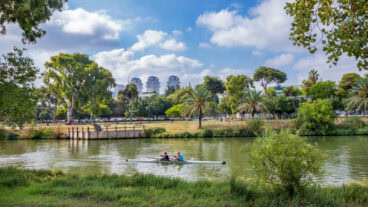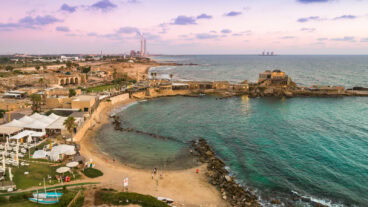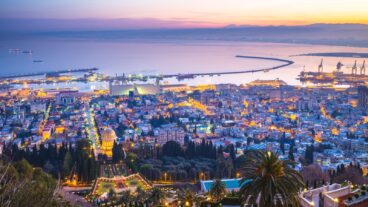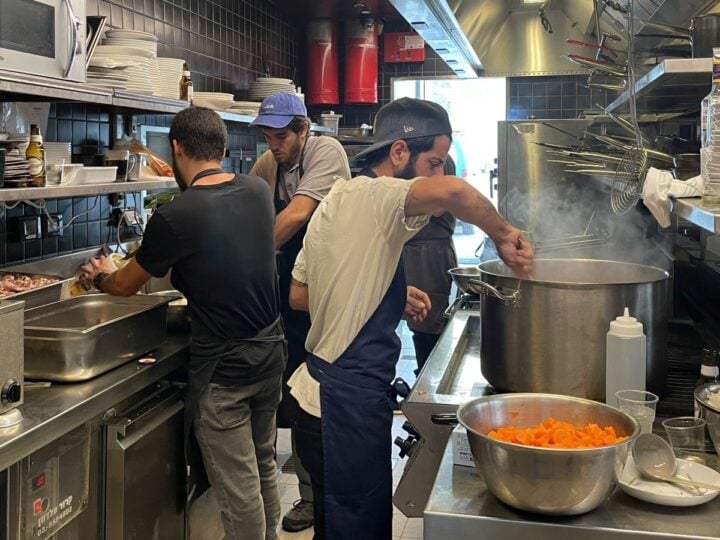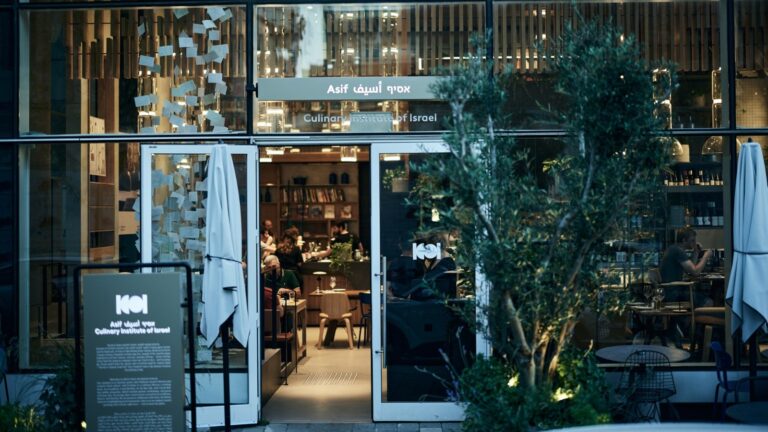After dropping off their car at the auto-repair shop, many Israelis stop for a bite nearby at one of those quintessential restaurants with Formica tables, dispensers of flimsy napkins and steaming trays of comfort food.
When the server comes to clear the plates and asks the standard question (“Did you have enough to eat, sweetie?”), the diner can either start regretting the heavy meatballs and rice or appreciate having enjoyed an authentic culinary experience.
Those experiences are harder to come by these days.
“It’s really elusive to find a true workers’ restaurant today. Yes, the same meals are being served and it still looks the same, but the clientele has changed. They are no longer workers, who I doubt could afford to eat there nowadays,” shares Liora Rosin, co-curator of a current exhibition that pays tribute to workers’ restaurants (misadot poalim).
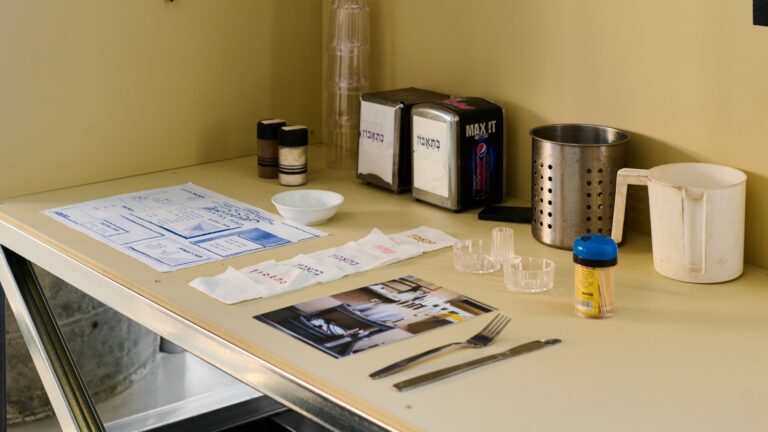
It has to be filling
Misadot poalim provided workers with a simple midday meal that was affordable and filling enough to provide energy to return to their labors.
The emphasis is not on how the meal tastes or looks but on how it sits in the stomach.
“There is no plating, just dishing out a large portion. The common goal is that customers leave full and satisfied,” Rosin tells ISRAEL21c.
Workers’ restaurants open at noon and close when the pots are empty. “This would never happen at a McDonalds,” Rosin notes, adding that these restaurants “are frozen in time in the best way. They do not change or go with trends. Rice doesn’t get replaced with quinoa.”
Furthermore, they make food from scratch and don’t use pre-cut or frozen ingredients.
“I even imagine lists of produce needed being written down with a pencil and paper,” says the curator, who has a master’s degree in industrial design and lectures at Bezalel Academy of Art and Design in Jerusalem.
Back in the day
Another important characteristic can be found on the walls, which are half covered with ceramic tiles for easy cleaning.
On the upper section, in a prominent place, are photographs of famous diners, alongside newspaper articles, certificates, and perhaps a hamsa and a clock.
“The photographs were a mix of the real ‘influencers’ of the day from local politicians to movie stars and visiting celebrities. They were proof of the place’s quality and success.”
Rosin and co-curator Rona Zinger were excited when approached by Asif Culinary Institute of Israel to mount the exhibition “Home Away from Home: A Tribute to Workers’ Restaurants.”
“It touches a familiar spot and hits the core of nostalgia we all share. Perhaps even values we miss,” shares Rosin, 42.
Ashkenazi or Mizrachi?
Although we think of these restaurants as Mizrachi (oriental) in their culinary style, serving dishes spiced with cumin and turmeric, they were not always so.
“Every aliyah [immigration wave] that came pushed the immigrant group before them up on the social chain and this is reflected in who became the working class,” Rosin explains.
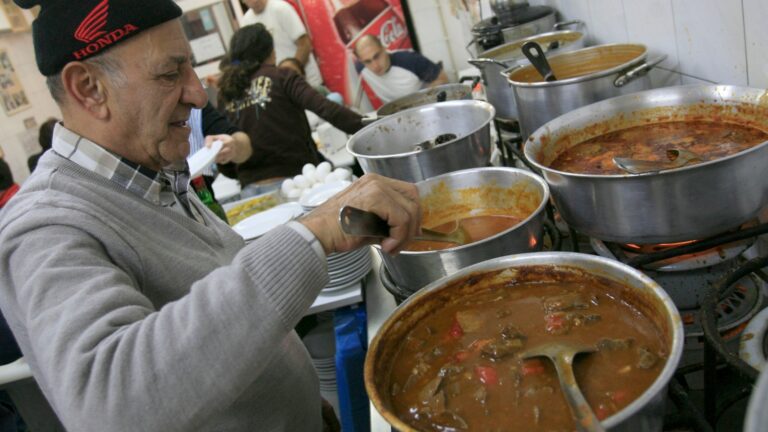
In the 1920s and 1930s, the workers’ canteens were more Ashkenazi and similar to the dining rooms of kibbutzim that were serving up hearty meals to the halutzim (pioneers). The simple and cheap fare of the day was hardboiled eggs, leben (similar to thin yogurt), salad and sometimes tzuf, a date drink, for dessert.
Where are they now?
Rosin and Zinger had to scour Israel to find what is left of the typical workers’ restaurants.
“They are almost tombstones to the old industries. Sometimes factories are gone but the restaurant remains,” says Rosin.
The restaurants are usually found on the outskirts of town where small industries exist. In Tel Aviv, this would be Eilat Street, where you find textile, carpentry and metal workshops, as well as printers
Rosin doesn’t want to single out restaurants, but a few come up in conversation.
She mentions Azura, which has been in Mahane Yehuda in Jerusalem since 1958 and serves kubbeh, red beets, boiled potatoes, kebabs and rice and beans “in the old fashioned way” as well as Iraqi-style Hakubbeh shel Momo in Haifa and Salimi on Herzl Street in Tel Aviv, which serves simple and quite moderately priced Persian dishes.
Rosin grew up near the well-known Edna restaurant in Ramat Hasharon. It originally served shawarma to auto repair workers in the area, then moved on to Persian food and today it has a wide menu.
Today’s real workers
Included in the Asif exhibition are visuals by one of Israel’s top food and still life photographers, Dan Perez, and filmmaker Ilya Marcus, who depict the real blue-collar laborers in Israel today – migrants and asylum seekers.
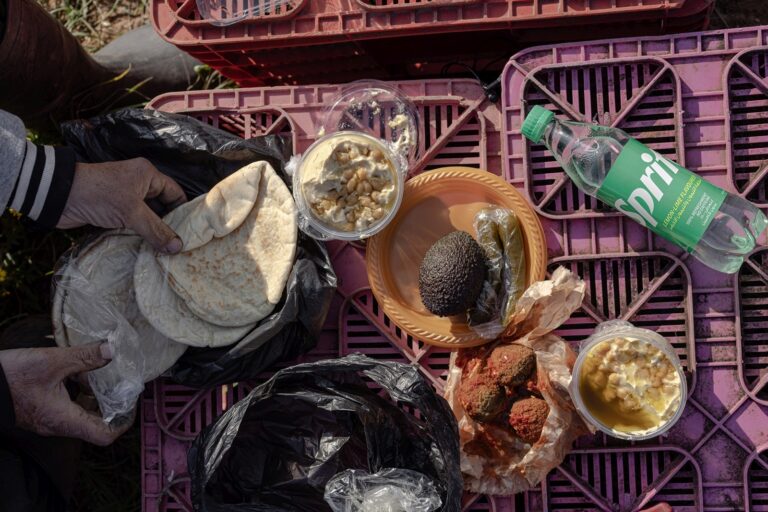
We see images of Thai laborers in the Arava and Turkish and Sudanese construction workers who spend their lunchbreak resting on a construction site or in the fields, eating food they have made themselves or bought from others in their community out of plastic containers.
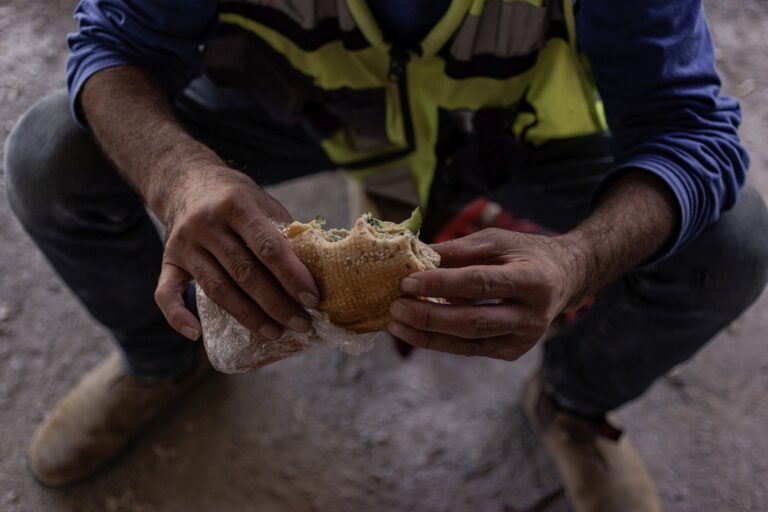
Rosin says we could also include high-tech workers in the current list, as they work long hours and need a good meal at lunchtime. With their employers footing the bill through the 10bis app, these workers sometimes opt for a “workers meal” over a more sophisticated option.
They are joined by upper-middle-class diners who come for an “authentic experience with a spoonful of nostalgia,” as the exhibition catalogue describes them.
Rosin is accepting of the changes that have taken place. “At least the culinary tradition carries on,” she says optimistically.
“Home Away from Home – A Tribute to Workers’ Restaurants” is on exhibit at Asif Culinary Institute of Israel, 28 Lilienblum Street, Tel Aviv, through July 2023.




